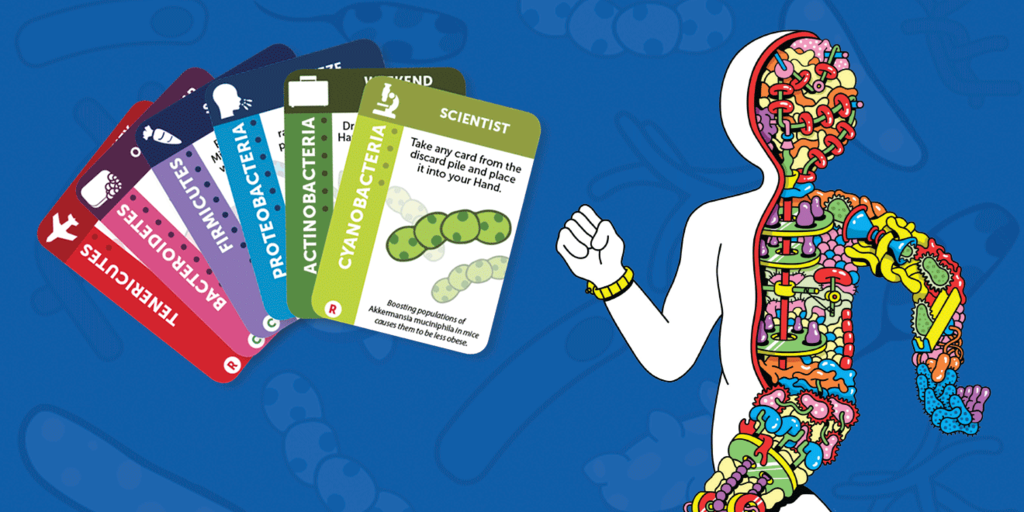Posted 2 Dec

UP CLOSE – INSIDE US is all about peeking behind the walls of flesh, skin, and bone of our bodies to explore everything lurking inside.
When you look at yourself in the mirror, often there is only one entity staring back… you. Aside from the occasionally appearing, dimly lit faces that are hard to discern from figments of your imagination or regrettably real consequences of chanting “bloody Mary” into a mirror, does anything else surprising get reflected back? Probably not. However, if every mirror in the world had microscopic lenses, that would be a different story.
There is a whole world inside of us hidden from the naked eye and visible only at the microscopic scale. This cellular world is commonly measured in microns, where one micron equals one thousandth of a millimetre- imagine reading that on a ruler! Here, human cells mingle with a diverse range of other species including fungi and viruses, but especially bacteria due to their gigantic population numbers.
The almost-too-big-to-comprehend number of bacterial cells inside the average human body is ~4×1013. In other words, this is roughly 4x(10x10x10x10x10x10x10x10x10x10x10x10x10), which totals 40,000,000,000,000, or forty trillion. So, the bacteria inside your gut (collectively known as the gut microbiome), specifically your large intestine, make up the majority of this number. In contrast, there are approximately 3×1013 human cells, where this number is dominated by red blood cells (erythrocytes). This makes the ratio of bacterial cells to human cells roughly 1.3:1. Meaning that the proportion of bacterial cells is higher than human cells [1] [2]. Does this influence what it means to be human? Does it influence the way you look at yourself?
To get a deeper lay of the land before answering, consider playing this card game we’ve been enjoying called Gutsy. Since games are great at improving cognition, emotional wellbeing, and social wellbeing [3], what better way to decide than dive in?

Basically, there are four types of cards (microbes, pathogens, events, quarantine). Each player has a hand of 6 microbe and pathogen cards, 2 of which are placed on the table and form your gut. Active players can build their guts with microbe cards or wreak havoc on others’ guts by strategically transmitting pathogens. Every card played employs a microbiome-altering action, like running out of soap, going on an all-salad diet, travelling abroad, sneezing, and even kissing- all in the name of bacterial transmission, of course.
Game changing event cards from the draw pile behave similarly but pack a bigger punch. There’s adorable, bacteria-boosting actions like sharing hugs at a family reunion and adopting a puppy, but fast-food binges and mass food poisoning are also in the mix. As a result, these have dire consequences and make your gut extra hospitable too pathogens. Diversity is the goal- to win, you must have 6 different microbes (and no pathogens) in your gut. It’s easier than it sounds, because your precious microbes are vulnerable to being nicked by other players. Stakes are high because the only defense is to play the sole quarantine card from the deck.
Our favourite part of this game is the rule where whoever is one card away from victory must yell “I’m feeling gutsy!”. Coming in at a close second is the method behind deciding the first player- whoever most recently ate a salad. Eat up! The sheer strategy of mandatory vegetable eating enforced by parents worldwide has not gone unappreciated.
To play this at your next games night, head HERE to print out the cards and instructions. It’s completely free, courtesy of the American Museum of Natural History. All you need is a printer, paper or cardstock, scissors, and a bunch of friends and family, or more aptly, familiar multicellular super-organisms.
[1] Sender R, Fuchs S, Milo R. Are We Really Vastly Outnumbered? Revisiting the Ratio of Bacterial to Host Cells in Humans. Cell. 2016 Jan 28;164(3):337-40. doi: 10.1016/j.cell.2016.01.013. PMID: 26824647.
[2] Sender R, Fuchs S, Milo R. Revised Estimates for the Number of Human and Bacteria Cells in the Body. PLoS Biol. 2016;14(8):e1002533. Published 2016 Aug 19. doi:10.1371/journal.pbio.1002533.
[3] Granic I, Lobel A, Engels RC. The benefits of playing video games. Am Psychol. 2014 Jan;69(1):66-78. doi: 10.1037/a0034857. Epub 2013 Dec 2. PMID: 24295515.